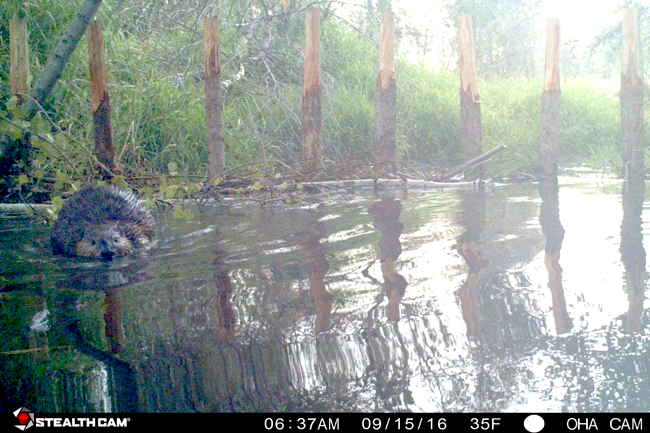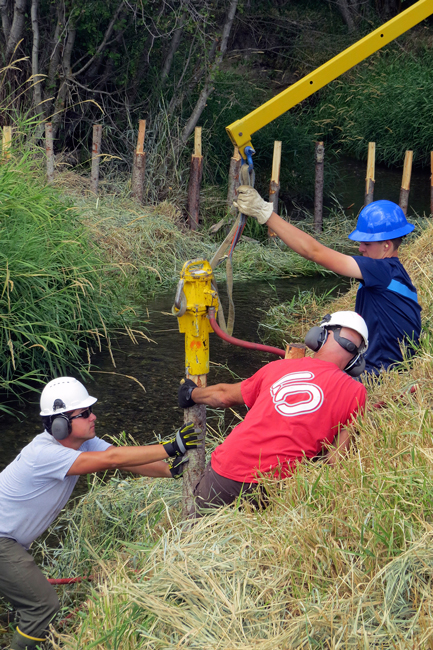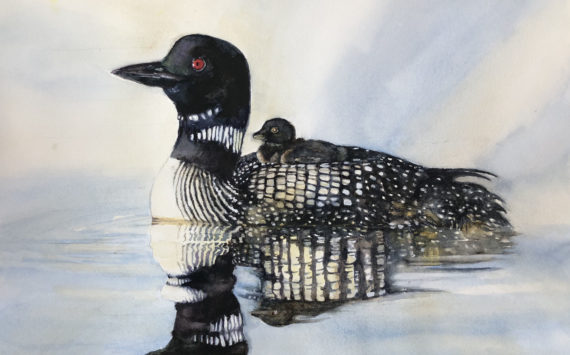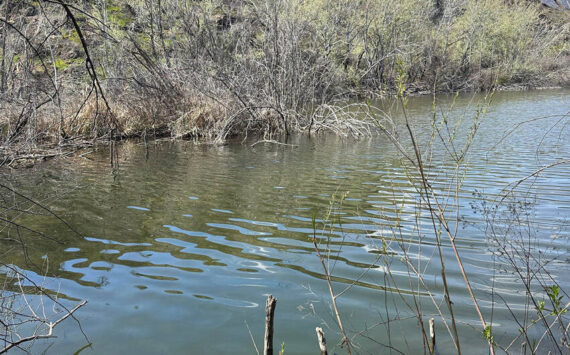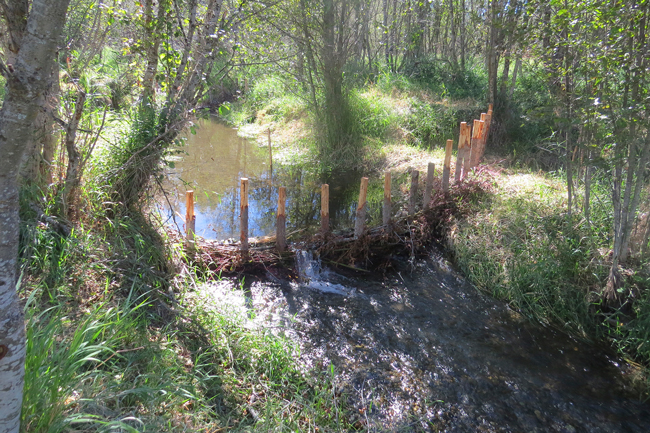
Collaborative team of environmental, state and federal partners
On the western toe of Buckhorn Mountain, in a place called Triple Creek, a rich wetland once thrived. A productive great blue heron rookery overlooked large beaver ponds teeming with trout. Myers Creek spilled over its banks, keeping the soils wet so that animals from all levels of life could flourish – from dragonflies to frogs to birds of prey. In the late 1990’s, an unusually heavy rain-on-snow event changed everything. Compounded by intensive land use practices in the upper watershed, the rainy, rapid snowmelt produced so much stream power that it scoured Myers Creek and cut the stream channel 10-12 feet downward into the floodplain. Known as “channel incision,” this new topography separated the water from the land. The beaver ponds drained, the soil dried out, and invasive weeds took over the plant community. The beavers and the herons left, while the landowners were left wondering how to make the site healthy again.

Okanogan Highlands Alliance (OHA), a local non-profit dedicated to watershed health, has observed the changes on the Triple Creek site over the past two decades. When the landowners wrestled with various restoration options, OHA stepped up with a proposal to kick-start the natural ecological processes necessary for the wetlands to come back over time. Before long, a collaborative team came together, including Trout Unlimited, the US Fish and Wildlife Service (USFWS) and the National Oceanic and Atmospheric Administration (NOAA) Northwest Fisheries Science Center. Each partner in this collaboration has brought specific expertise to make the project a reality, whether that be designing the instream structures, developing the monitoring component, planning for the establishment of riparian plants, or involving community members and local students in the work. Funding sources include the Department of Ecology water quality funds, the USFWS Partners program, a penalty settlement agreement between Ecology and Kinross Gold, and in-kind contributions from all collaborators.
In a healthy stream and wetland setting, beavers often build and maintain wetlands by creating dams that slow the water down and spread it out. When the water moves more slowly, sediment drops out of the water column and settles onto the stream bottom. When the water spreads out, it creates wetlands. Establishing healthier wetland areas near the stream helps improve water quality over time, because wetlands act as natural buffers between the land and the water. Wetlands filter pollutants, preventing them from entering the stream. The restoration approach selected by the team centers on the construction of beaver dam analogues, or BDAs: woven post lines that mimic the structure and function of natural beaver dams. Dr. Michael Pollock of the NOAA Fisheries Science Center, a project collaborator, pioneered this approach. It is the same approach that OHA utilized at another, smaller scale project downstream on Myers Creek two years ago.

Starting on Aug. 23, 2016, the team began installing a series of 26 BDAs at the Triple Creek site. Using a post pounder powered by a large air compressor, conifer posts between eight and 12 feet long were driven into the streambed until they were 50 percent below ground. The team placed the posts across the stream channel in a line, some completely spanning the channel to slow the water down and spread it out. These “post line wicker weave” BDA structures will cause sediment to drop out of the stream, just like natural beaver dams do. As the sediment accumulates, it will build the streambed higher and higher, closer to the floodplain where the water used to flow. A second type of BDA, one that only partially spans the channel, was employed by the team to push the force of the water onto the streambank to recruit silt, sand, and clay (sediment). These “deflector dams” make more sediment available within the project area and will allow more material to accumulate on the streambed, building it back up more quickly. The deflector dams will also help increase the length of the stream by making the shape of Myers Creek meander more, which will make the stream more stable. Ten pieces of large wood were also added to the stream to enhance the habitat for fish and to increase channel roughness.
The first step toward reconnecting the water with the land at Triple Creek has been to slow the water down and raise the water surface elevation, by building the BDAs. After the team placed the post lines across the stream, community members helped weave the posts with freshly cut red osier dogwood, willow and maple branches. This interface provides the structure that slows the water down. Within days of being woven, the BDAs had roughly doubled the water depth in most locations.
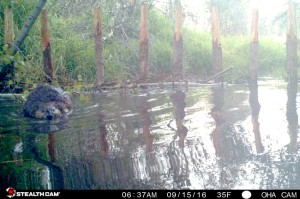
Only six days after post installation began, beavers took interest in the project, chewing pieces of weave material and eating the bark. The next week, the beavers took down some alder trees, between two BDAs. It appears that nature’s best wetland engineers may be ready to join the restoration team. While human efforts have focused on kick-starting natural ecological processes, it is beavers that can finish and maintain this project over time. OHA had hoped to reintroduce beaver at a future date when more riparian vegetation had been established to support them; however, they may be ready to help out now. The collaborative team may have gained the ultimate partner in restoration, one that has the capacity to carry this project forward for generations.
For more information, please visit www.okanoganhighlands.org/restoration/triple-creek. Okanogan Highlands Alliance is a non-profit organization that works on building the capacity of the community to steward natural habitats and resources. There will be a volunteer work party for planting trees and shrubs on Thursday, Oct. 13; community members interested in signing up, or being involved in other aspects of the project, can contact Julie Ashmore at julie@okanoganhighlands.org or 509-476-2432.
